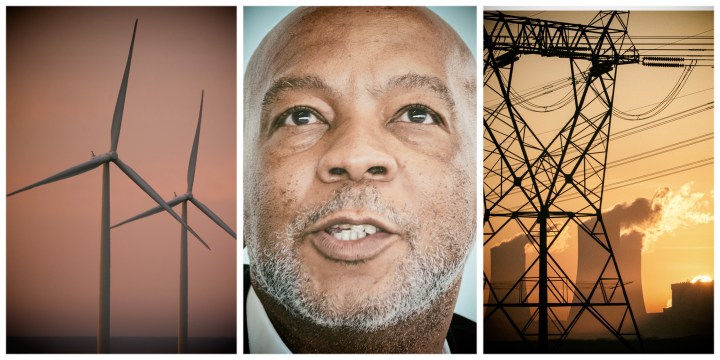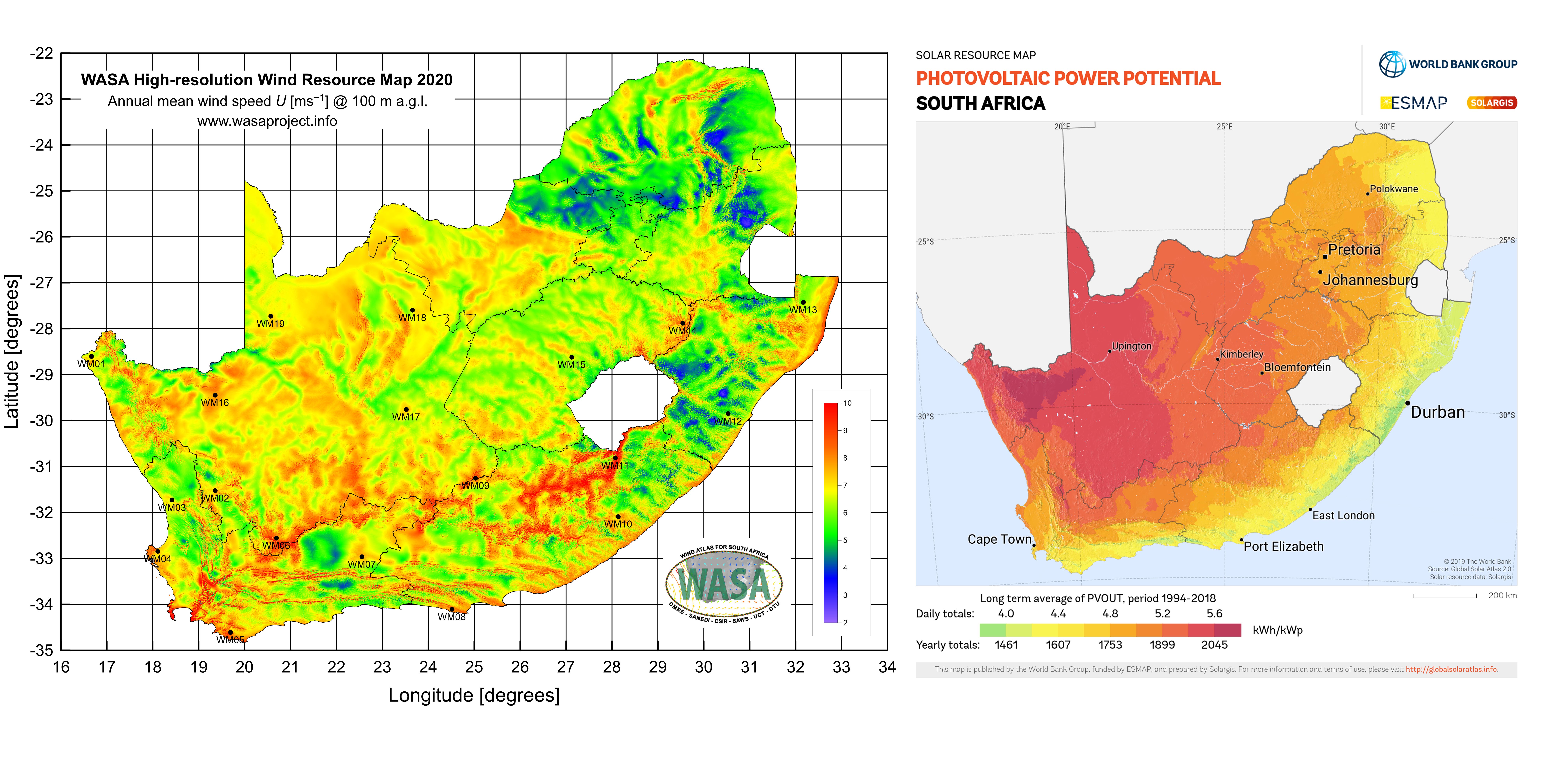POWER CRISIS
Ramokgopa outlines ‘twin challenges’ to defeating rolling blackouts

Electricity Minister Kgosientsho Ramokgopa has outlined what he considers the ‘twin challenges’ of underperforming pre-existing generation capacity and the structural constraints to adding new generation capacity through transmission.
In a media briefing on Sunday, the minister of electricity, Dr Kgosientsho Ramokgopa, outlined what he considered the “twin challenges” that defined South Africa’s electricity crisis and the country’s beleaguered grid.
The grid is made up of generation, transmission and distribution.
Ramokgopa explained that the issues related to generation and transmission represented the “twin challenges that should be addressed for us to be able to resolve the load shedding problem”.
Generation is the power stations (or plants) that generate electricity. Examples of these are the newly built Kusile and Medupi power stations. South Africa has a generation capacity of about 58GW, with Eskom’s share of this being 44GW, of which 38GW is from coal-powered stations.
Transmission, on the other hand, is comprised of more than 33,000km of high-voltage lines that transport electricity at high voltage levels (such as 400kV or 765kV) to cities and towns. From there it branches out to 325,000km of lower-voltage lines that distribute electricity to homes and businesses.
Unreliable generation
The minister has previously outlined plans to ensure that South Africa’s existing generation infrastructure is functional and operating with greater consistency. This means ensuring that the coal-fired power plants — mostly located in Mpumalanga — are working and generating electricity.
Read more in Daily Maverick: Electricity Minister Kgosientsho Ramokgopa to push for extending life of ageing coal-fired power station
Coal has been the backbone of South Africa’s energy sector for decades, providing the lion’s share of the nation’s electricity needs. However, the ageing coal-fired power stations have become a glaring liability, struggling to meet the demands of a growing population and an emerging economy. Frequent breakdowns and maintenance issues have plagued these power plants, leading to an unreliable electricity supply.
There are several reasons South Africa’s coal-fired power stations are so unreliable. One is that they are simply old. Many of the plants were built in the 1970s and 1980s and are reaching the end of their lifespan. Another reason is that the plants have not been properly maintained due to corruption, incompetence, State Capture and various combinations thereof.
This crisis in generation, however, is only half of the problem.
In line with South Africa’s international, health and climate-related commitments to phase out its pollutive coal-fired power station fleet as well as the practical reality of its advanced age and the uncompetitive cost of fossil fuel infrastructure, new investments into renewable energy infrastructure are essential. To unlock generation in renewable energy, the country needs to resolve its transmission challenges.
“The point I’ve been making consistently is that we can’t kick the can down the road and think that we’ll resolve transmission sometime in the future once we have sufficient generation [capacity]. It’s important that we’re able to address these in parallel… These are the twin challenges that should be addressed for us to be able to resolve the load shedding problem,” Ramokgopa said.
“The generation side [of the problem is]… principally on installed capacity [while] the transmission side is going to enable new generation capacity, especially the renewables and it’s going to help us to have a healthy mix of generation sources in the country,” he said.
Freeways, cars and offramps
“I like using the metaphor of the cars and the roads because I think it’s important that we democratise this conversation so we don’t just talk alone as the so-called enlightened or engineering experts. I think we must bring it closer to home,” the minister said.
He explained that transmission lines “are the major freeways that are conveying the electrons. The electrons — in the metaphor of the roads — are the cars.”
He said transmission represents “the roads, the national roads that are connecting one major province to another, one major city to another. So these are the major roads. These are high-speed roads [on which] you attain speeds of 120 kilometres-plus, they are wide, they’ve got multiple lanes. These are the freeways that are conveying, if you like, our cars and in this instance, these [transmission lines] are the freeways that are conveying our electrons.”
“So we have a total of 33,217 kilometres of high voltage and extra high voltage [transmission lines].
“Then there you have 160,194MVA [megavolt-amperes] of installed transformer capacity. So transformers get to move electricity from high voltage… to low voltage so that you are able to get the electricity there at home.”
Read more in Daily Maverick: Growing some backbone – reimagining the future of Eskom and the grid, beyond load shedding
Continuing with his metaphor, he explained, “We have these freeways, and the cars are moving at high speeds and that’s your transmission line… and then the transformers, if you like, is your off-ramp and as you off-ramp, then there’s a speed attenuation measure — the one that reduces the speed — you’re going to go into a traffic light or you’re going to reach a stop sign and then as you move into your loop local roads, you get… the speed humps.
“So, think of transformers as say, as an off-ramp, you think of them as a stop sign, you think of them as traffic lights and then you think of them as speed humps.
“They’re slowing down the cars and in this instance, they’re slowing down the speed of the cars — these electrons — so that there’s no huge amount of electricity that comes into a house, because now the house will not be able to accommodate that. So that’s what we’re talking about [about], so these are the transmission assets. We’ve got about 572 transformers and substations,” said Ramokgopa.
Building new ‘freeways’ and ‘roads’
“So what we’re trying to resolve is that, if you look at the map, the new generation capacity from the renewable energy sources, wind and solar PV, is concentrated in the areas of the Western Cape and the Northern Cape for obvious reasons.”
Ramokgopa explained that those obvious reasons include that Western Cape and Eastern Cape have some of the strongest wind speeds and that the highest quality of irradiation levels in SA are in the Northern Cape.

Solar resource and PV power potential map (Source: World Bank); Wind Resource Map (Source: Wind Atlas for South Africa)
“There is no symmetry between those locations and where grid capacity is available. And that’s why, as I speak to you, stand before you now, we have insufficient grid capacity, essentially in three provinces.”
To use the minister’s metaphor, there simply aren’t enough “roads” for the “cars” that will increasingly come from the Cape provinces in the future to connect to SA’s other cities and towns.
Read more in Daily Maverick: ‘Effectively on ice’: Grid capacity constraints jeopardise some renewable energy projects
But what is being done about it? According to the minister, about 14,218km of new powerlines need to be added over a period. Over the past 10 years, Eskom has increased the lines by about 4,347km.
“At its peak, we should be connecting about 2,700 kilometres of new line per annum,” the minister said.
“In terms of the MVA build, the transformers, you need a 600% increase in transmission infrastructure in the next 10 years. So what we have done over the past 10 years?
“We achieved 19,000 of electricity MVA. The projection is that going into the future, we need a whopping 123,669 of MVA capacity for us to be able to meet the kind of ambition that we have.
“So, what we’re doing is to upgrade the existing transformers, the transformers they are installed, so we are increasing their capacity. We are talking about a total of 25 projects that can unleash about 13 gigawatts of electricity into the grid. And then you can see that in terms of these projects that are under way, this is all [to be] connected by 2026. But the work starts now.” DM





















 Become an Insider
Become an Insider
But nothing new in these determinations. Where’s he been for the last year? Rather than talk about it get out there and manage it’s happening.
My thoughts exactly. Don’t keep restating the problem ….. expedite the solution.
Excellent news -assume a decent unassailable un stealable budget is there. Hoping for speedy and efficient implementation AND a critically monitored maintenance and repair plan with the right skills and experience alongside to implement. Start training now.
All of this is taken from the planning done by de Ruyter and his Eskom team, that nobody wanted to listen to. Now the new kid on the block is reading from that same hymn sheet, making out that he is the shining light for the future.
De Ruyter was instrumental in splitting the three entities and was well aware that the money was not there for progress to be made. The can will continue to be kicked down the road.
More ANC rhetoric to make the orator sound convincing.
I wonder if the ANC will ever hear someone say, “Your actions are so loud, I cannot hear what you are saying”?
I loved the map. My parents always spoke of De Aar being the railway interchange of SA but it seems that it is also a major electricity interconnector just down the road as well. A town few even know about yet probably vital to endeavours in keeping the lights on.